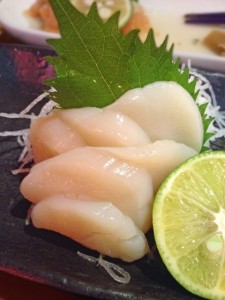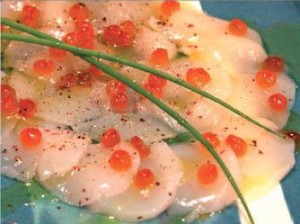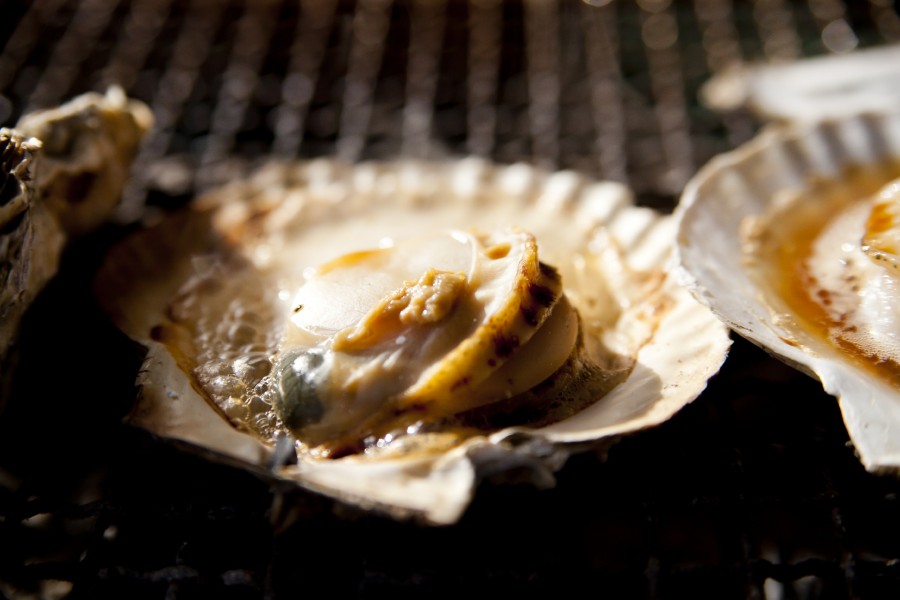When you think of shellfish, many varieties such as asari clams, shijimi clams, abalone, oysters, ark shells, etc., may come to mind, but you cannot ignore “hotate.” Hotate, Japanese scallop, is delicious either raw or broiled. With the discovery of hotate shells in the shell mounds of the Jomon period (12,000 B.C. – 300 B.C.), it is known that they have been enlivening the mealtimes of the Japanese since ancient times.
Contents:
What is Hotate?
 Hotate scallops live scattered at a depth of 20 to 30 meters in sandy, muddy ocean substrates with larger grains of sand than those where asari and hamaguri clams are found . Hotate scallops are bivalve mollusks that make their habitat in the cold water floor; they are known to prefer solitude. The Chinese characters for “hotate” mean “raise a sail.” This describes the way they move on the ocean floor, like a sailboat being pushed by the wind as they open and raise one of their shells. In the Edo period (1603-1868), hotate became a commodity of the Shogunate, who formally presented them to China in straw bags. Hotate is a food valued throughout the .
Hotate scallops live scattered at a depth of 20 to 30 meters in sandy, muddy ocean substrates with larger grains of sand than those where asari and hamaguri clams are found . Hotate scallops are bivalve mollusks that make their habitat in the cold water floor; they are known to prefer solitude. The Chinese characters for “hotate” mean “raise a sail.” This describes the way they move on the ocean floor, like a sailboat being pushed by the wind as they open and raise one of their shells. In the Edo period (1603-1868), hotate became a commodity of the Shogunate, who formally presented them to China in straw bags. Hotate is a food valued throughout the .
Hotate’s nutritional value
Hotate is a rich source of protein, calcium, vitamins, and iron. Of these nutrients, protein, vitamin B1, and taurine are attracting attention in health foods. Taurine is particularly noteworthy as an aid to development of the eyes and the brain, to rids the body of bad cholesterol, and to reduces blood pressure. Hotate is also considered a diet food for its high-protein, low calorie content and abundant vitamins and minerals.
How to cook Hotate?
Scallop and Ikura Carpaccio Recipe

Ingredients (Serves 2)
- 3 scallops
- 1 Tbsp. ikura
- 1 Tbsp. olive oil
- 1 tsp. sake (cooking sake)
- Salt and pepper (to taste)
- Lemon (as desired)
Cooking Directions
- Slice each scallop into 3-4 pieces.
- Mix the ikura with the sake.
- Top the scallops with salt, pepper, oil, and ikura. Add lemon as desired.

